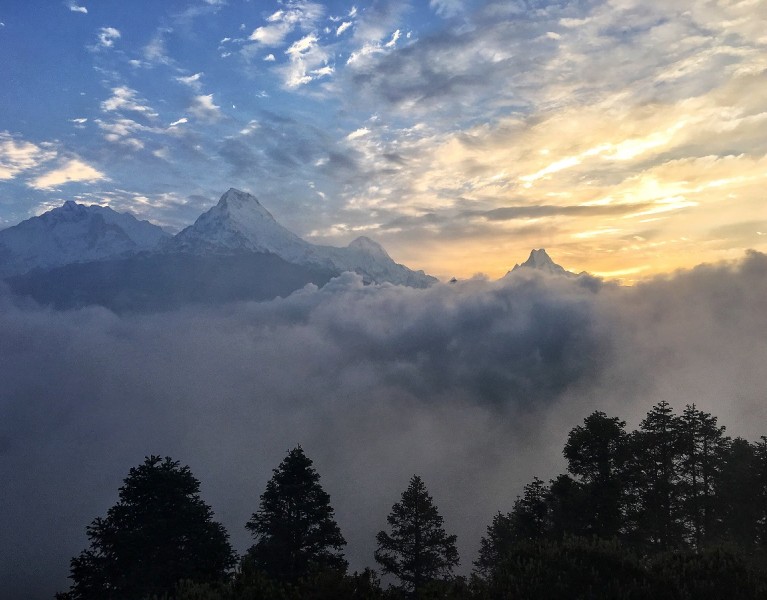
How to Prepare for Nepal's Poon Hill Circuit
Table of Contents [Show]
If you enjoy trekking as much as I do, you're bound to visit Nepal at some point. It's quite simply hiking paradise. Nepal's most famous multi-day treks are the Annapurna Circuit and the trek to Everest Base Camp. These difficult treks require a great deal of preparation, and even gearing up for them can be quite pricey. Good news - there are other multi-day treks in Nepal that feature incredible views, fantastic experiences, and physical challenges, while being easier on the wallet. One such trek is the Poon Hill Circuit, which can be walked in as little as 4 days/3 nights, although most people walk it in 5 days/4 nights.
The Poon Hill Circuit
The Poon Hill Circuit starts in the small city of Nayapul, and continues through several tiny villages, including Tirkhedunga, Ghorepani, and Tadapani. Trekkers eventually reach the larger village of Ghandruk before returning to Nayapul. The trail traverses a variety of landscapes and climates, with views changing from rice terraces, agricultural fields and pastures, to mighty mountains with views of the Annapurna South. The trek can be very challenging, due to a combination of factors. The change in altitude can be dramatic; on day 2 of the trek, I climbed from 1500 meters above sea level to almost 3000 meters. The weather can be hot and humid, or it can pour rain. The rain makes the trail slippery. There are steady uphills and just as many steep downhills. Despite the challenging conditions, I found Poon Hill to be an incredibly rewarding trek, not only for the stunning views of the mountains and the cultural enrichment of meeting indigenous peoples, but also for the companionship with my fellow trekkers.
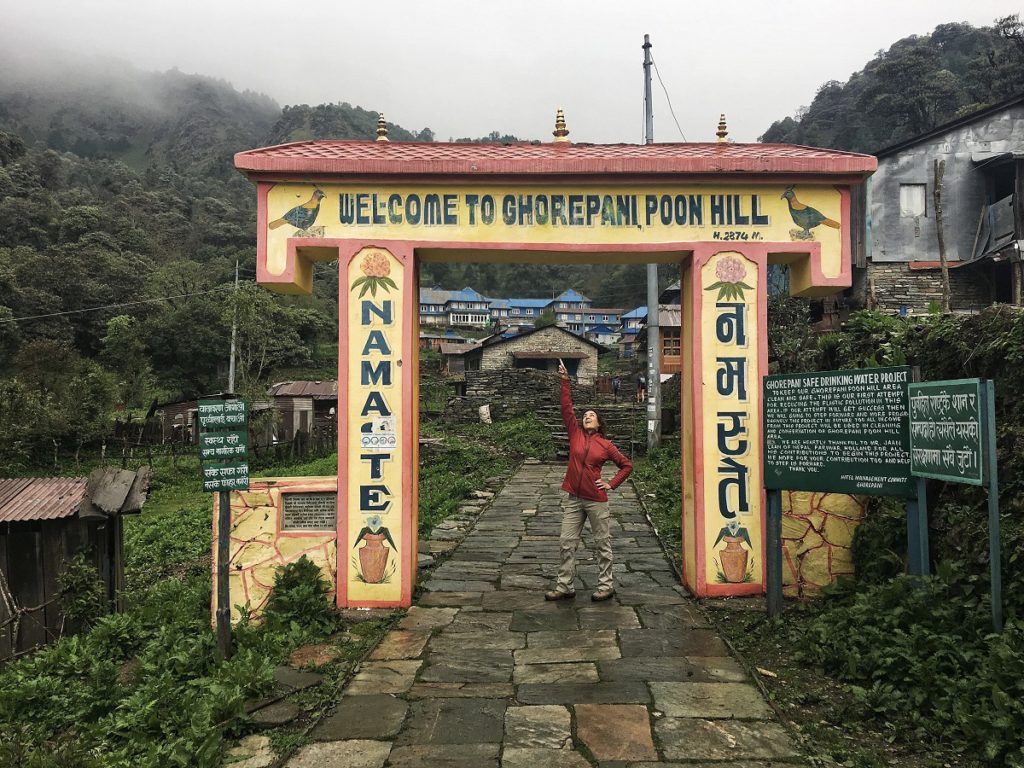
How to Prepare for the Poon Hill Circuit
Hiking Independently
Many people walk the Poon Hill Circuit solo, but I advise going with a friend or a small group. The trail is quite easy to follow, but there are a few places where it's possible to get confused and take a wrong turn. The last thing you want is to be lost in the mountains of Nepal with no phone service. If traveling independently, you need to arrange your trekking permits. Take two passport-sized photos with you. You won’t be able to book accommodations in advance, so if you plan to walk during the high season (November to March), it may be a bit of a challenge to find a place to sleep. The average cost for walking the Poon Hill Circuit independently varies from $75 to $150 for the entire trail (between $15 and $30 per day). This doesn't include the permit fees or the cost of transportation to and from Nayapul, the starting point of the trek. Here's a rough idea of prices (the exchange rate is 100 Rupees to $1 USD):
- Between 300 and 600 Rupees per night for accommodation (shared twin room or private room, without bathroom)
- 100 Rupees for hot showers (cold showers are free, but the water is really cold!)
- 100 Rupees for electricity to charge smartphones or batteries
- 100 Rupees for wifi (I advise against it as it's unreliable)
- Between 200 and 400 Rupees per meal
- Between 50 and 100 Rupees to refill a bottle of water (price is per liter and increases with the altitude)
- Between 400 and 500 Rupees for a half liter bottle of local beer
Hiking with a Tour Company
Joining a tour group for the Poon Hill Circuit makes things much easier!. Groups tend to be small. My group had 9 hikers, 2 guides and several porters. A guided expedition costs around $600 USD. It may seem steep compared to an independent trip, but the cost also includes hotels in Kathmandu and Pokhara, transportation to and from the starting point, all accommodation and meals during the trek, the guides and the porters. The only additional cost is for drinks. There are many benefits of joining a group expedition. The group dynamic is fun. Guides are very helpful, and the porters carry up to 10 kgs of luggage. Last, but definitely not least, you don't have to worry about finding a place to stay for the night.
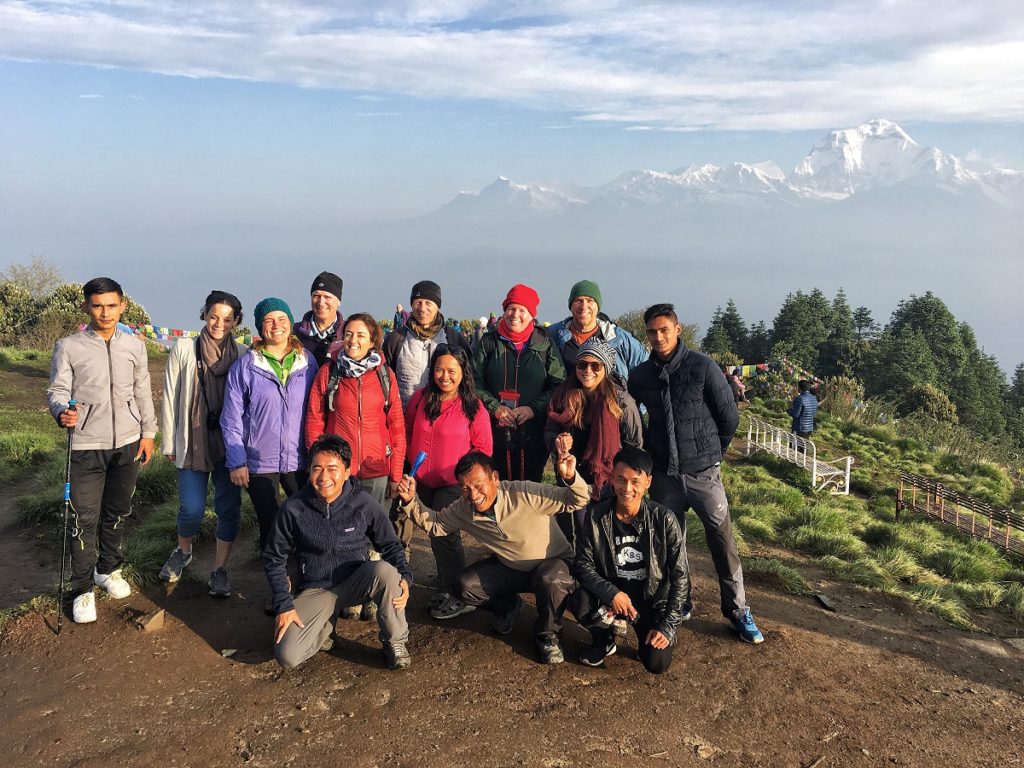
Sleeping and Eating Along the Trail
Tea houses are the typical accommodation on the Poon Hill Circuit. These are very basic guest houses. Rooms are very plain: twin beds and a bed side table, a bin, blankets and a pillow. Sheets are not very clean, so most people carry a sleeping bag. Rooms have electricity but no sockets for charging phones or batteries. Toilets in tea houses are generally squat (no flush), and toilet paper isn't provided. They're typically located outside the main building, although sometimes they're inside. Tea houses have showers,, but hot showers cost an extra dollar. Wifi is available, but it rarely works. Some tea houses (the ones located higher up in the mountains) have really nice wood stoves where guests gather to sit and chat. For as modest as they are, the atmosphere in the tea houses is very relaxed and cozy. Meals are served in the tea house, and there's a good variety to satisfy even the pickiest eater. Most tea houses rely on instant coffee, so don't expect a gourmet cup of coffee.
Packing for the Poon Hill Circuit
Packing light is vital. Walking more than 5000 steps from Tirkhedunga to Ghorepani is no joke, and even though there are porters on organized expeditions, you don't to overburden them with useless stuff.
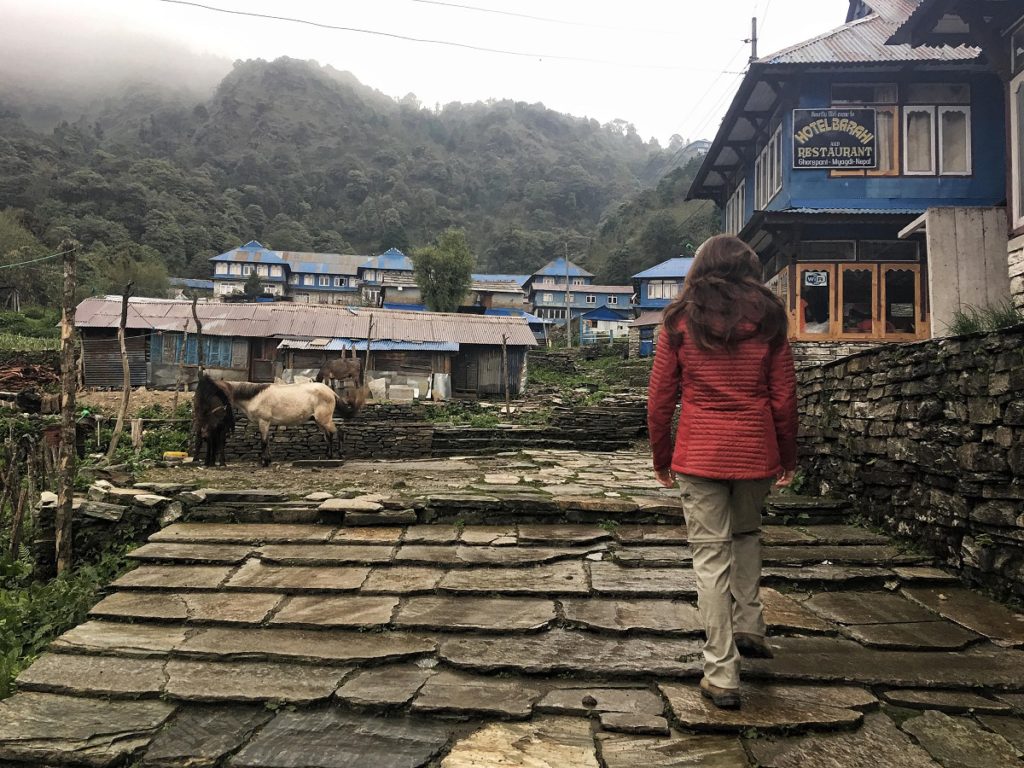
Divide this basic packing list between your daypack and a duffel bag for the porters to carry:
- Good hiking boots with proper ankle support. Running shoes are just not the same, especially when it rains and the terrain gets slippery.
- Flip flops. At the end of the day you'll want to kick off your boots and rest your feet. Flip flops also double as shower shoes.
- Two pairs of quick dry or water repellent women's hiking pants
- A pair of women's leggings for evenings and sleepwear
- Technical shirts (one short-sleeved and one long-sleeved)
- Hiking socks with padding
- A light sweater or fleece for chilly mornings and nights
- A women's softshell jacket
- A women's rain jacket or poncho
- A basic toiletry bag, including toothbrush, toothpaste, a bar of soap, deodorant, sunblock and any medications you need
- Toilet paper and wet wipes
- A refillable water bottle
- A sleeping bag
- A power bank
- Snacks such as trail mix, dried fruit or granola bars
- Camera
- Cash. There are no ATMs along the trail, so you'll need cash for drinks and to tip guides and porters.
Final Recommendations
Trekking along the Poon Hill Circuit offers endless opportunities to take in the amazing nature and splendid views of Nepal, and to experience its rich culture. Think of the trek this way and don't make it a race. Always walk at your own place, whether you are the fastest one and lead the trail, or the slowest one in the group. The views will be the same, after all!
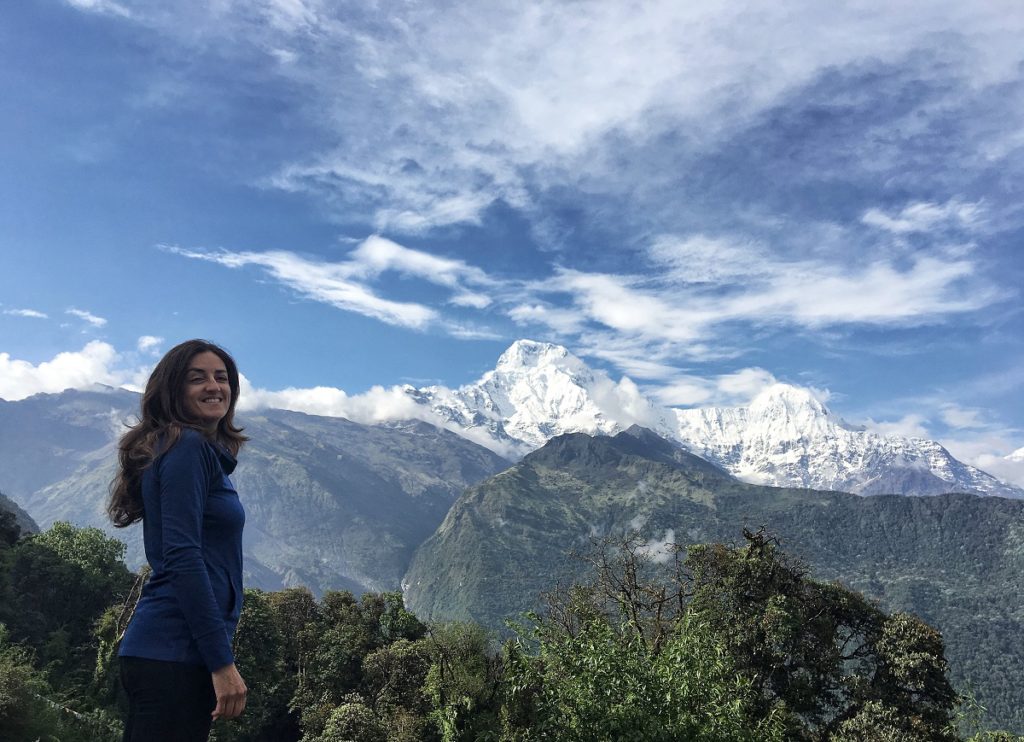
Claudia is a former human rights lawyer who changed careers to follow her true calling. She’s now traveling around the world in search of adventures and unique hiking experiences. Read her full trip report from the Poon Hill Circuit.


